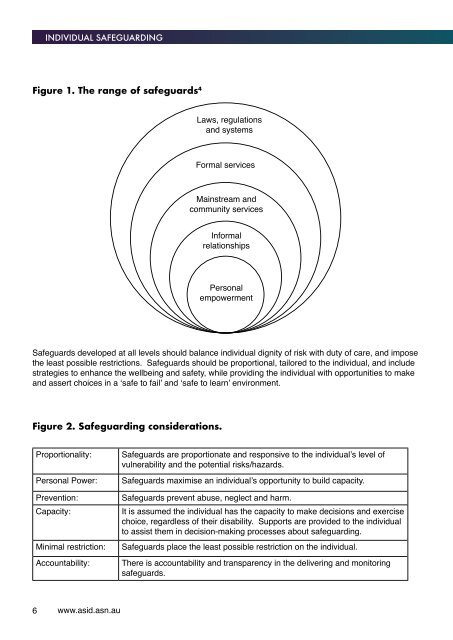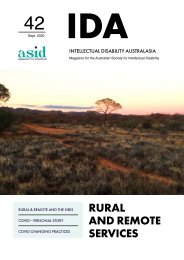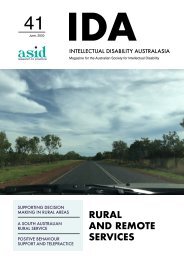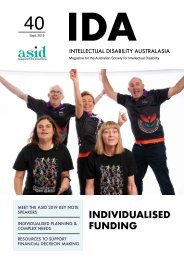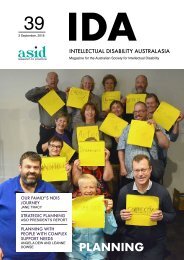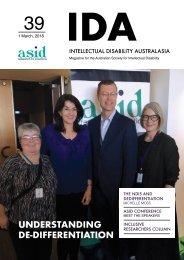Create successful ePaper yourself
Turn your PDF publications into a flip-book with our unique Google optimized e-Paper software.
INDIVIDUAL SAFEGUARDING<br />
Figure 1. The range of safeguards 4<br />
Laws, regulations<br />
and systems<br />
Formal services<br />
Mainstream and<br />
community services<br />
Informal<br />
relationships<br />
Personal<br />
empowerment<br />
Safeguards developed at all levels should balance individual dignity of risk with duty of care, and impose<br />
the least possible restrictions. Safeguards should be proportional, tailored to the individual, and include<br />
strategies to enhance the wellbeing and safety, while providing the individual with opportunities to make<br />
and assert choices in a ‘safe to fail’ and ‘safe to learn’ environment.<br />
Figure 2. Safeguarding considerations.<br />
Proportionality:<br />
Personal Power:<br />
Prevention:<br />
Capacity:<br />
Minimal restriction:<br />
Accountability:<br />
Safeguards are proportionate and responsive to the individual’s level of<br />
vulnerability and the potential risks/hazards.<br />
Safeguards maximise an individual’s opportunity to build capacity.<br />
Safeguards prevent abuse, neglect and harm.<br />
It is assumed the individual has the capacity to make decisions and exercise<br />
choice, regardless of their disability. Supports are provided to the individual<br />
to assist them in decision-making processes about safeguarding.<br />
Safeguards place the least possible restriction on the individual.<br />
There is accountability and transparency in the delivering and monitoring<br />
safeguards.<br />
6 www.asid.asn.au


